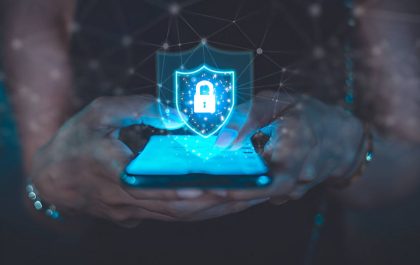In today’s interconnected world, the Internet of Things (IoT) has become an integral part of our daily lives at home and in the workplace. While the convenience and efficiency offered by consumer IoT devices in office environments are undeniable, the risks associated with their use cannot be ignored. This article explores the potential threats posed by consumer IoT devices in office settings and outlines effective incident response strategies to mitigate these risks.
Table of Contents
ToggleThe Dangers of Using Consumer IoT Devices in the Workplace
Security Vulnerabilities
Consumer IoT devices often fall short in adhering to established security measures, making them susceptible to cyber assaults. The use of weak or obsolete encryption technologies can allow unauthorized access to critical data, posing a significant threat to the confidentiality and integrity of sensitive information.
Pre-configured Usernames and Passwords
Many consumer IoT devices come with pre-configured usernames and passwords, presenting an open invitation to nefarious actors. Exploiting these default credentials is a common tactic hackers employ, underscoring the importance of robust authentication measures in preventing unauthorized access.
Wide Attack Surface
The proliferation of consumer IoT devices in office settings widens the attack surface, providing malicious actors numerous opportunities to exploit vulnerabilities. As the number of these devices increase, so does the potential for security breaches, necessitating a comprehensive approach to mitigate these risks.
Privacy Hazards
Consumer IoT devices routinely gather and retain large volumes of data. Failure to manage this data properly can lead to privacy hazards, with the potential for sensitive information about employees, clients, or business processes to fall into the wrong hands. Protecting privacy requires a proactive stance in ensuring that data collected by these devices is handled with the utmost care and security.
What to Look Out for When Purchasing Consumer IoT Devices For the Workplace

Organizations must exercise due diligence when selecting and implementing these technologies to mitigate the risks associated with consumer IoT devices.
Compliance with Security Standards
Ensuring that the chosen consumer IoT device complies with industry-recognized security standards is paramount. Certifications such as ETSI EN 303 645, specifically focusing on consumer IoT cybersecurity, serve as crucial benchmarks for evaluating a device’s security posture.
Third-party Validation
Relying on independent examinations and testing conducted by third-party groups is essential to validate the security claims made by device manufacturers. This external validation adds an extra layer of assurance, ensuring that the device meets the highest security standards.
Strong Authentication Measures
The implementation of strong authentication measures is non-negotiable. Verifying that the device requires robust user authentication helps prevent unauthorized access and fortifies the overall security of the office environment
Robust Encryption Protocols
Ensuring that the device employs robust encryption protocols for both data transmission and storage is critical. This safeguards sensitive information from interception or compromise, enhancing the confidentiality and integrity of the data.
Manufacturer’s Security Approach
Examining the manufacturer’s overall security approach is vital. This includes assessing their track record in fixing vulnerabilities, commitment to best practices, and dedication to ongoing security enhancements. The manufacturer’s transparent and proactive security stance indicates a reliable IoT device.
Proper Incident Management in Case of a Data Breach
In the event of a security incident involving consumer IoT devices, a well-orchestrated incident response plan is crucial for minimizing damage and restoring normalcy. The incident management process can be broken down into several key phases.

Preparation
Organizations must develop comprehensive incident response policies and plans to prepare for potential incidents. This involves identifying critical assets and assessing their value to prioritize response efforts. Additionally, conducting thorough risk assessments helps anticipate potential threats. To ensure a coordinated response, it is essential to establish a dedicated incident response team with clearly defined roles and responsibilities.
Detection and Analysis
The detection and analysis phase requires the implementation of robust monitoring and alerting systems. This enables organizations to identify suspicious activities promptly. Gathering and preserving evidence for forensic analysis is crucial during this stage, allowing for a deeper understanding of the incident’s scope and impact on critical systems and data.
Containment
In the event of an incident, swift and effective containment measures are essential. Isolating affected systems or networks prevents the spread of the incident, while applying temporary fixes or mitigations helps minimize ongoing risks. Transparent communication with relevant stakeholders, raising awareness, and managing expectations throughout the containment process is also vital.
Eradication
Identifying the incident’s root cause is a pivotal aspect of the eradication phase. A thorough investigation is conducted to understand the underlying issues. Subsequently, a long-term solution is developed to eliminate vulnerabilities and prevent future occurrences. Testing and implementing necessary security patches or updates further fortify the system against potential threats.
Recovery
The recovery phase involves a comprehensive post-incident review following the containment and eradication efforts. This evaluation helps assess the response’s effectiveness and identifies improvement areas. Documenting the incident and response is crucial for future reference and learning. Updating the incident response plan based on lessons learned enhances the organization’s overall incident management capabilities.
Summary
Integrating consumer IoT devices in office environments brings both convenience and risks. Understanding and mitigating these risks requires a comprehensive approach, from careful device selection to proactive incident response planning.
Independent cybersecurity labs like CCLab help organizations adhere to industry standards and implement robust incident response strategies. Manufacturers can harness the benefits of consumer IoT devices while safeguarding their critical assets and maintaining the privacy and trust of stakeholders.
Related posts
Hot Topics
Everything You Need to Know About a Savings Plan in 2025
A savings plan is a financial tool that offers the combined benefits of insurance & growth. This ensures financial security…
Mobile Threat Defense: The Silent Shield Behind Every Secure App
Mobile apps are found everywhere in India’s rapidly developing digital landscape—from banking and online shopping to healthcare and learning. And…



